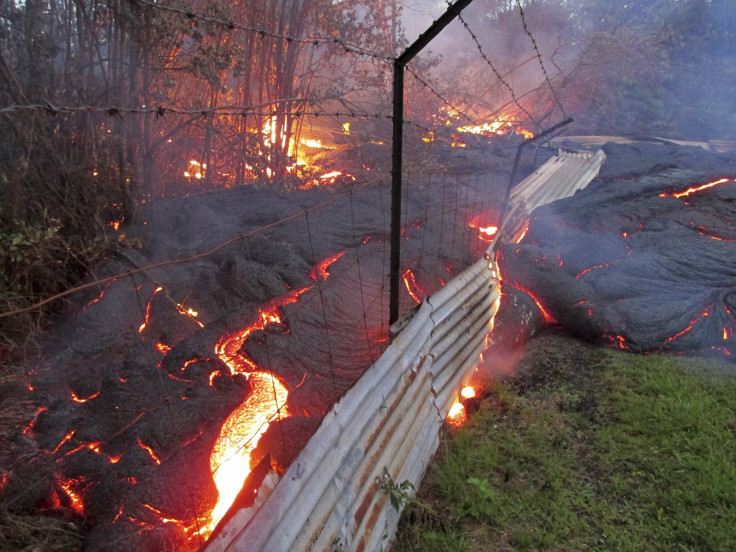Hawaii Volcano Update: Kilauea Lava Flow Halted For Now

The slow-moving lava flow from Hawaii's Kilauea volcano has stopped advancing toward the heart of the Big Island village of Pahoa, authorities said Friday. But the danger for residents has not yet passed, as the lava could return to activity in the near future, according to a Friday update by Hawaii County Civil Defense.
Authorities continue to monitor the lava flow as it branches out in other areas, and vegetation continues burning along its edges, but for now it appears that the people of Pahoa can take a break from worrying about it destroying their tight-knit island community. "This morning’s assessment shows that the flow front remains stalled with very little activity and has not advanced over the past week," the Hawaii County Civil Defense statement posted online Friday morning said. "The flow pad continues to show signs of inflation which could result in breakouts and more activity."
The lava flow is currently just 480 feet from Pahoa Village Road, which runs through the center of the village, so any return to activity could be cause for alarm. But officials and residents of the Puna district have been aware for the past few weeks that the flow was approaching and have been able to take precautions to ensure their continuing safety, the Associated Press reported. Residents of the village were evacuated late last month as the lava flow destroyed a number of homes in the area.
"Although current flow activity has decreased, the evacuation advisory for those residents down slope of the flow will continue, and residents will be kept informed of the flow status and advancement," the Hawaii County Civil Defense statement added.
The lava, which is hotter than 1,650 degrees Fahrenheit (900 degrees Celsius), according to the U.S. Geological Survey, was advancing at 10 to 15 yards per hour early last week, threatening at least 50 homes. The flow has destroyed a garden shed, some debris and much of a cemetery since Oct. 26, according to Reuters.
"You can only imagine the frustration as well as ... despair they're going through," Hawaii County Civil Defense Director Darryl Oliveira said last week about the residents of Pahoa, according to BBC News. Kilauea's ongoing Puʻu ʻŌʻō Eruption began in 1983 and is "the most voluminous outpouring of lava from the volcano's East Rift Zone in the past five centuries," according to the U.S. Geological Survey.
© Copyright IBTimes 2024. All rights reserved.





















